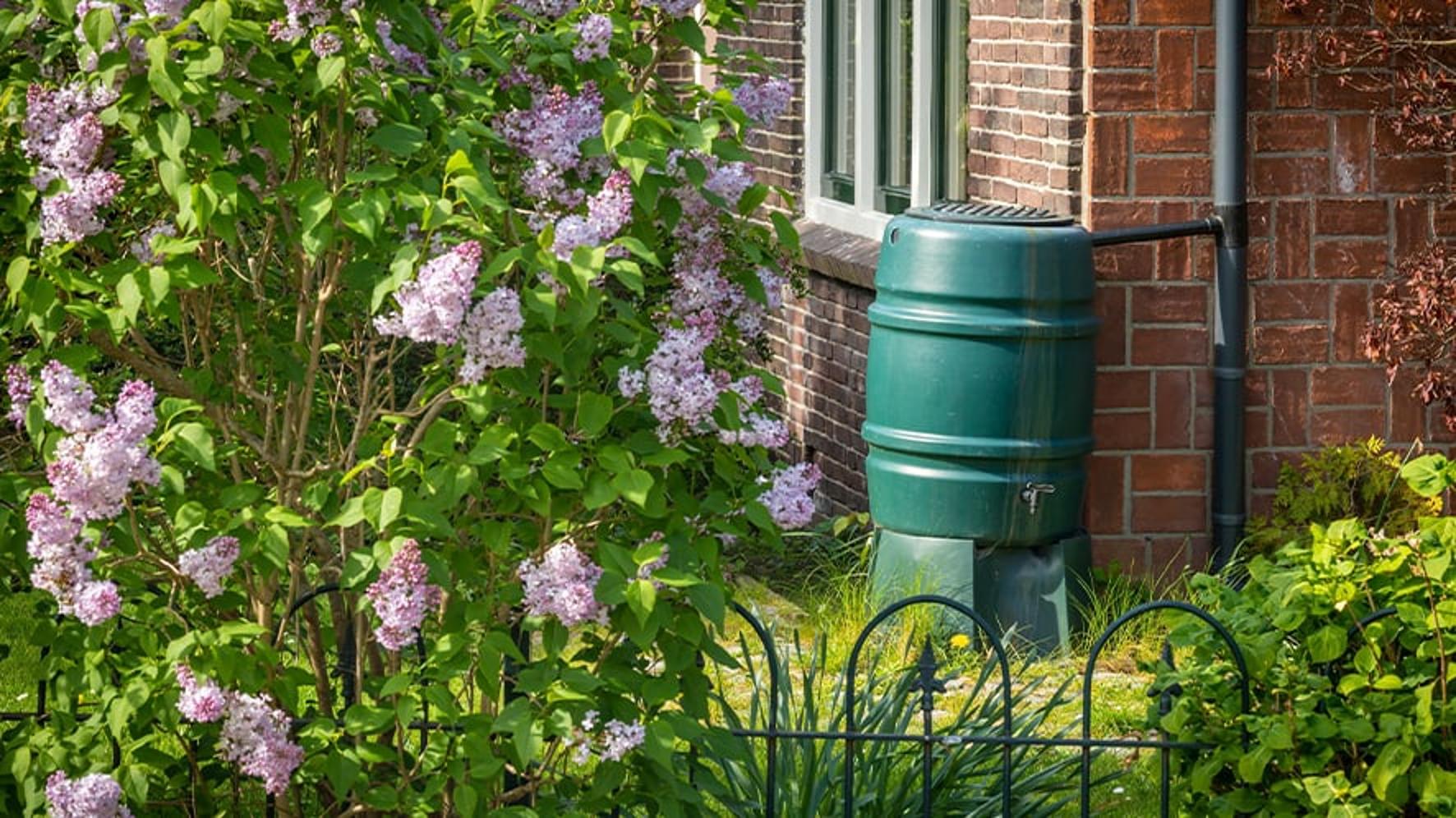By the end of this blog, you’ll be convinced that getting a water butt is a genius move. We promise.
Let’s just get the basics out of the way: a water butt is a container that holds rainwater so you can use it in the garden. They usually connect to a downpipe, collecting rain from the roof of your home (or shed, garage etc). They have a tap so you can use the water to fill a can.
Here are 9 reasons why getting a water butt is a good idea:
1. A free supply of water
Water butts are a much better option than using a hose or even filling a watering can from your garden tap. The water that falls from the sky is there for you to use – with no fees attached. If you’re on a meter and use water in the garden, a water butt can easily pay for itself through lower bills. See our water meter page if you’re considering getting one (it’s free!)
2. Acidity your plants will love
Did you know, rainwater has a different acidity level to tap water? We deliberately make tap water slightly alkaline so it doesn’t erode pipes. Rainwater has the best acidity level for plants, especially ericaceous plants like heather, rhododendron, camellia and azalea.
3. Natural nutrition for plants
If you looked at rainwater under a microscope, you’d find nitrates and organic matter that are filtered out of your drinking water supply. However, they’re beneficial to plants so using rainwater can help to keep your garden green and blooming.
4. A nice tepid shower
If water is too cold, it can cause shock to plant roots. The water in a water butt is naturally a bit warmer than tap water, which gets cold in underground pipes. Using a water butt means your plants get the warm water they prefer.
5. Drought dodging
Our water resources are in good shape this year and we have no plans to introduce a hosepipe ban. This is despite a dry start to the year (you can check current reservoir levels). We never want to put hosepipe bans in place, but if it does prove necessary one day then a water butt means you can keep on watering your garden without breaking any rules.
6. Support for wildlife
The water supplied to your home is taken from rivers and reservoirs, where it also helps support precious wildlife – fish, birds, animals, insects and the creatures that feed on them, and so on. Using a water butt means reservoirs stay fuller, so there’s plenty to support the natural environment. Find out more about water and the environment.
7. Reduce your carbon footprint
You might not think of electricity when you look at a glass of water, but there is an energy cost. It takes energy to treat water to make it clean and pump it around the network. You bypass all this when you capture your own water in a water butt. Find out more about the journey of water.
8. A style challenge
If you don’t love the way classic water butts look, getting one can be a fun styling challenge. If you have the budget for it, you could opt for a fancy one that looks like an urn or a planter. If you don’t want to spend much, you could use netting, trellis, climbing plants or some other clever way of keeping your water butt under wraps.
9. Topping up ponds
Tap water has small quantities of chlorine, which is used to kill off harmful bacteria. This is good for human health, but it’s not so good for the delicate ecosystem of a garden pond. It’s best to let tap water stand in a bucket for a day or so to let chlorine evaporate off before using it to top your pond up – if you have a water butt, you won’t have to wait.
There you have it – water butts are officially a good idea. Are there any downsides? Well, you need to buy one - they’re relatively cheap, and if you’re on a meter they quickly pay for themselves.
You also need to fit the water butt (which is a simple job) and clean it every year or so to clear sediment and algae. Using a lid helps to prevent dirt from getting into the water butt, and stops it from becoming a breeding ground for insects including mosquitoes.
